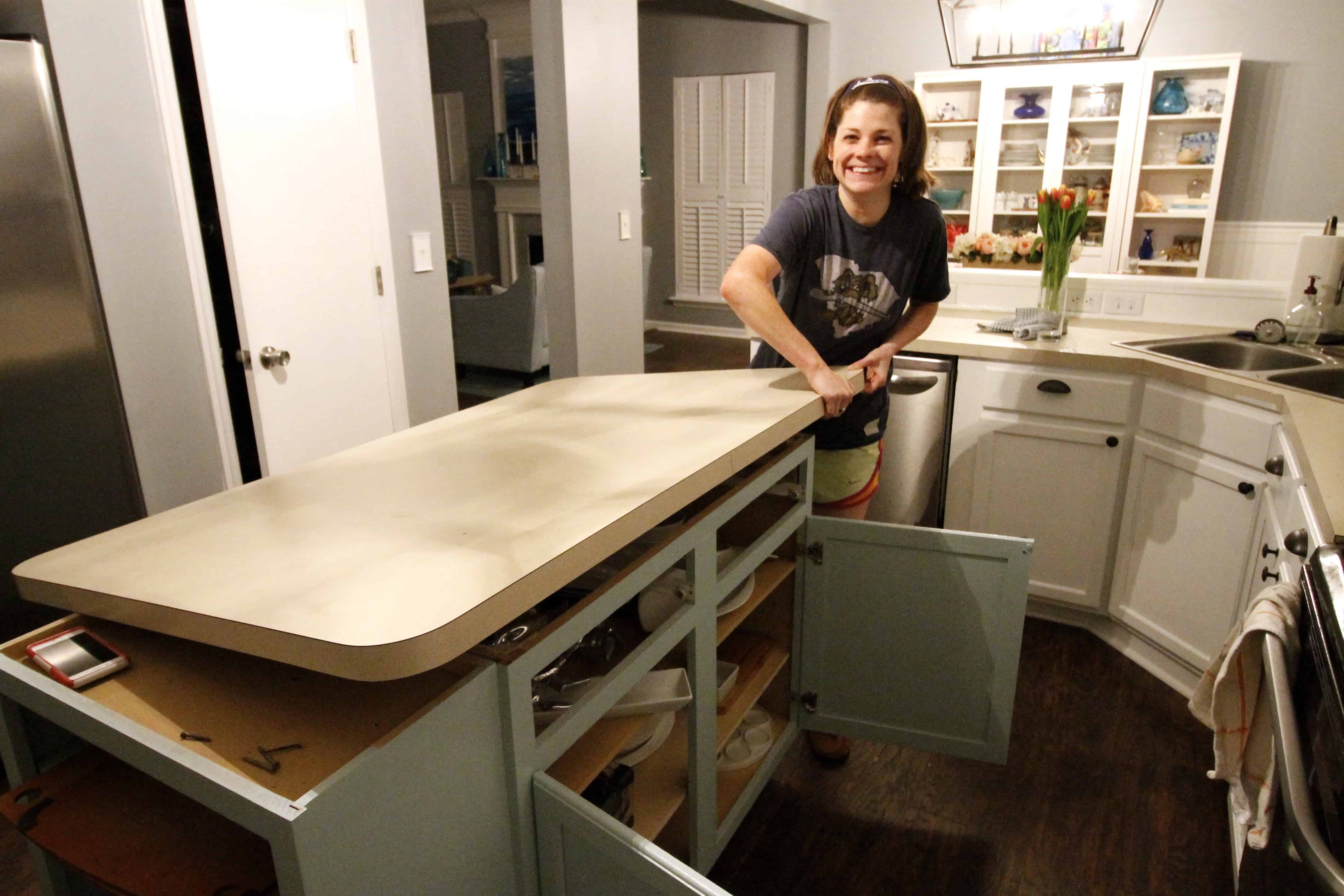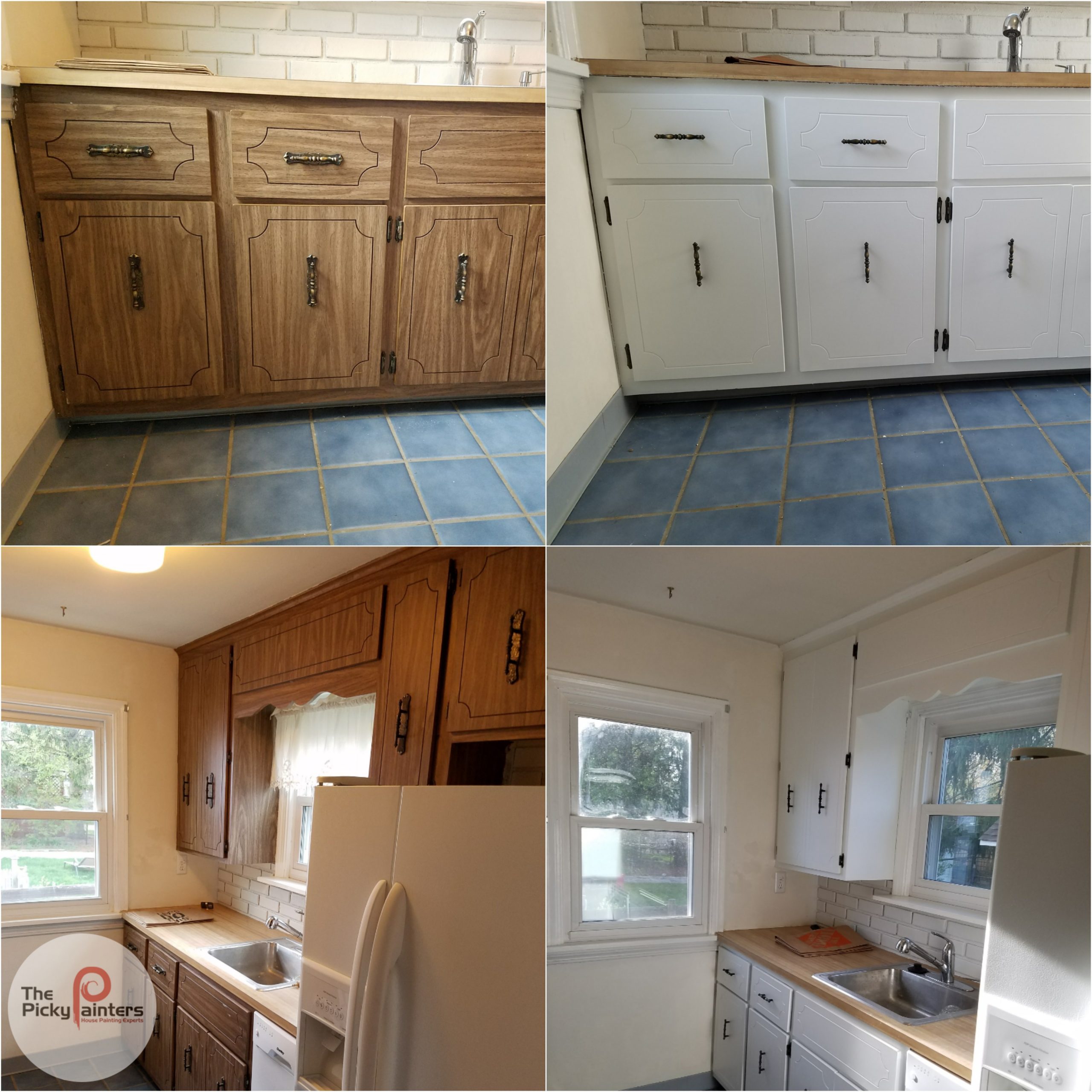Preparing Cabinets for Painting After Laminate Removal: Peel Laminate Off Cabinets And Paint
/cabinet-refacing-demystified-1822044v2-29c0506ee7014a54a7473d9a5d85b149.jpg)
Removing laminate from cabinets before painting reveals the underlying substrate, allowing for a smoother, more durable finish. Proper preparation is key to a successful paint job, ensuring the paint adheres well and lasts for years to come. This process involves careful laminate removal, surface cleaning, and preparation for priming and painting.
Tools and Safety Precautions for Laminate Removal, Peel laminate off cabinets and paint
Careful planning and the right tools are essential for safe and efficient laminate removal. Always prioritize safety by wearing appropriate personal protective equipment (PPE), including safety glasses, a dust mask, and work gloves. A well-ventilated area is crucial to minimize exposure to dust and fumes, especially when using a heat gun or chemical stripper.
| Method | Tools | Advantages | Disadvantages |
|---|---|---|---|
| Heat Gun | Heat gun, scraper, putty knife | Relatively fast, effective on larger areas | Risk of burning the substrate if not used carefully, requires good ventilation |
| Chemical Stripper | Chemical stripper, scraper, putty knife, brush, safety gloves | Effective on stubborn laminate, less likely to damage substrate than heat gun | Strong chemical odor, requires longer application time, potentially harmful if not handled correctly |
| Scraping (Manual) | Various scrapers (plastic, metal), putty knife | Environmentally friendly, no fumes or heat | Labor-intensive, time-consuming, may damage substrate if not careful |
Laminate Removal Process
The following steps provide a structured approach to laminate removal, minimizing the risk of damage to the underlying material. Remember to always test your chosen method on a less visible area first.
- Assess the Laminate: Examine the laminate’s condition and thickness to determine the most suitable removal method. Consider factors like the age and type of laminate.
- Prepare the Area: Protect surrounding surfaces with drop cloths or plastic sheeting. Ensure adequate ventilation.
- Apply Heat (if using a heat gun): Apply heat to a small section of laminate, allowing it to soften. Avoid overheating, which can scorch the substrate.
- Apply Chemical Stripper (if using): Follow the manufacturer’s instructions carefully. Allow sufficient dwell time for the stripper to penetrate the laminate.
- Scrape the Laminate: Use a scraper or putty knife at a shallow angle to carefully lift and remove the softened or loosened laminate. Work in small sections.
- Clean the Scraped Area: Remove any remaining adhesive residue using a scraper or appropriate solvent. Be gentle to avoid scratching the underlying surface.
- Repeat as Necessary: Continue the process until all the laminate is removed from the cabinet doors and frames.
Cleaning and Preparing Cabinet Surfaces for Painting
After laminate removal, thorough cleaning and preparation are vital for optimal paint adhesion. Any remaining adhesive residue, dust, or debris must be completely removed.
- Clean the Surface: Use a suitable cleaner, such as a degreaser or TSP (trisodium phosphate), to remove any grease, dirt, or adhesive residue. Rinse thoroughly with clean water and allow to dry completely.
- Sanding: Lightly sand the surface with fine-grit sandpaper (120-180 grit) to create a smooth surface for better paint adhesion. Remove any sanding dust with a tack cloth.
- Fill Imperfections: Fill any gaps, holes, or imperfections with wood filler. Allow the filler to dry completely and sand smooth.
- Prime the Surface: Apply a high-quality primer specifically designed for cabinets or wood. This will create a uniform surface and improve paint adhesion. Allow the primer to dry completely before painting.
Painting the Cabinets

Painting your newly prepped cabinets is the rewarding culmination of your hard work. Choosing the right paint and applying it correctly will ensure a durable and beautiful finish that lasts for years. Careful attention to detail at this stage will significantly impact the final look and longevity of your project.
Peel laminate off cabinets and paint – Selecting the appropriate paint is crucial for a successful outcome. Several types of paint are suitable for cabinets, each with its own set of advantages and disadvantages. Let’s explore some popular options.
Paint Type Comparison
The choice between latex, oil-based, and enamel paints depends largely on your priorities and working conditions. Consider factors such as drying time, durability, and ease of cleanup when making your selection.
- Latex Paint: Water-based latex paints are popular due to their low odor, easy cleanup with soap and water, and relatively quick drying time. They offer good durability, especially when using a high-quality cabinet-grade formula. However, they may not be as durable as oil-based paints in high-traffic areas or areas prone to moisture.
- Oil-Based Paint: Oil-based paints are known for their exceptional durability and smooth finish. They are more resistant to scratches and moisture than latex paints, making them a good choice for kitchens and bathrooms. However, they have a strong odor, require mineral spirits for cleanup, and take much longer to dry. This necessitates more planning and patience.
- Enamel Paint: Enamel paints, often available in both oil-based and water-based (alkyd) formulations, are known for their hard, glossy finish. They offer excellent durability and resistance to scratches and stains. Similar to oil-based paints, the drying time can be longer, and cleanup may require solvents depending on the formulation.
Applying Paint to Cabinets
Achieving a smooth, even finish requires careful technique and preparation. Multiple thin coats are always preferable to one thick coat, which is more prone to drips and uneven drying. Proper preparation of the surface before painting is critical to achieving a professional-looking finish.
Begin by lightly sanding the cabinet surfaces to create a slightly textured surface for better paint adhesion. Then, apply the first coat of paint using smooth, even strokes, working in the direction of the wood grain. Allow the paint to dry completely according to the manufacturer’s instructions before applying subsequent coats. Lightly sand between coats with fine-grit sandpaper to smooth out any imperfections. For a truly professional finish, consider using a high-quality paintbrush or sprayer for a flawless application.
Sample Project Plan
This sample project plan assumes you have already prepared your cabinets for painting. Adjust the timelines based on your project’s scope and the drying times of your chosen paint.
- Day 1: First Coat Application (4-6 hours): Apply the first coat of paint to all cabinet surfaces. Allow ample drying time according to the paint manufacturer’s instructions.
- Day 2: Light Sanding & Second Coat (2-4 hours): Lightly sand the first coat with fine-grit sandpaper. Apply the second coat of paint, ensuring even coverage. Allow drying time as indicated on the paint can.
- Day 3: Final Inspection & Touch-ups (1-2 hours): Inspect the cabinets carefully for any imperfections. Apply touch-ups as needed. Allow ample time for final drying.
- Day 4: Hardware Reinstallation (2-4 hours): Reinstall cabinet hardware once the paint is completely dry. This step adds the finishing touches to your project.
Addressing Common Issues and Troubleshooting

Transforming your kitchen cabinets with a fresh coat of paint after removing the laminate can be a rewarding project, but it’s not always smooth sailing. Understanding potential problems and having solutions at hand will significantly increase your chances of success and minimize frustration. This section addresses common challenges and offers practical tips to help you achieve a professional finish.
Uneven Surfaces and Imperfections After Laminate Removal
Removing laminate can sometimes leave behind an uneven surface, with dips, bumps, or adhesive residue. These imperfections can significantly impact the final paint finish, leading to an unprofessional look. Thorough preparation is key. Before painting, carefully examine the cabinet surfaces. Use wood filler to level out any significant dips or gouges, allowing ample drying time before sanding smooth. For minor imperfections, a light sanding with fine-grit sandpaper might suffice. Stubborn adhesive residue can often be removed with a scraper and a solvent like mineral spirits, always following the manufacturer’s instructions carefully. Remember to thoroughly clean the surfaces after any cleaning or filling process, ensuring a clean, even surface for optimal paint adhesion.
Chipping Paint and Bubbling
Chipping paint is a common issue, often caused by inadequate surface preparation or using the wrong type of paint. Using a primer specifically designed for cabinets and applying multiple thin coats rather than one thick coat can greatly reduce chipping. Bubbling, on the other hand, usually indicates moisture trapped beneath the paint. Ensure the cabinets are completely dry before painting and use a paint that is suitable for the substrate and environmental conditions. Proper ventilation during the painting process can also help prevent bubbling. If bubbling occurs, gently scrape off the affected areas, allowing the surface to dry completely before repainting.
Achieving a Professional-Looking Finish
Achieving a truly professional-looking finish requires attention to detail and the right techniques. Using high-quality brushes or rollers designed for smooth finishes will help minimize brush strokes. Applying thin, even coats allows each layer to dry properly, preventing runs and drips. Light sanding between coats with fine-grit sandpaper can create a perfectly smooth surface for the next coat. Using painter’s tape to mask edges and protect areas you don’t want to paint will result in crisp, clean lines. Finally, take your time; rushing the process can lead to imperfections. Allow ample drying time between coats and before handling the cabinets.
